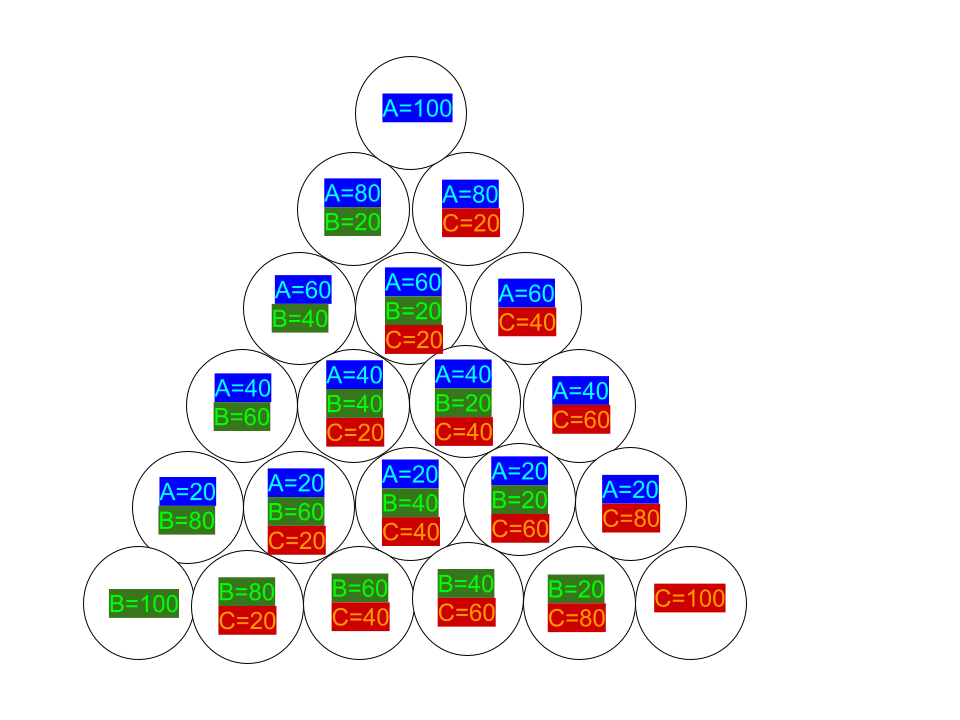A triaxial Blend is essentially 3 different line blends. You can discover many different colors or variations on glazes using this bend. To create this blend you either have three different ingredients you are testing such as silica, alumina, and flux, or silica, whiting, and feldspar, or you can opt for colorants. Either way, this is a great way to test different glazes to see how each material affects one another. Essentially a triaxial blend is doing 3 line blends and doing some proportions of all three as well.
You can make smaller blends by doing 6, 8, 10, 12, or 15 points and go all the way up to 28 points.

Hi Kevin, a nice visualisation of triaxial blending.
However, there’s a typo. In the bottom line the amounts of B and C need to be reversed. The line should read:
B=100; B=80/C=20; B=60/C=40; B=20/C=80; C=100
Thank you for the comment I just updated the image. I think it is correct this time.